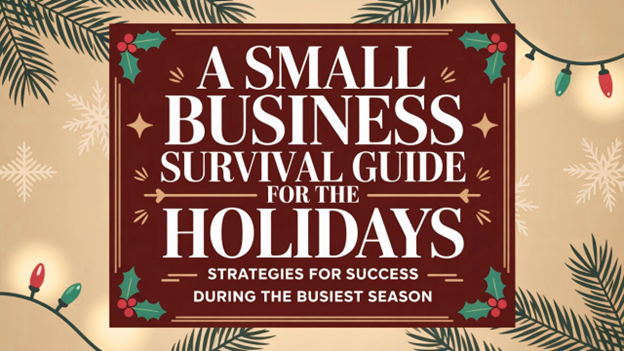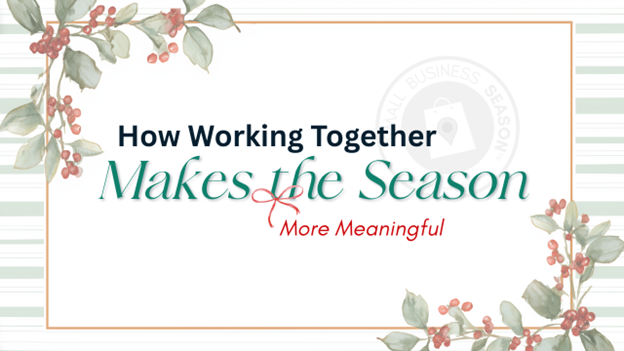How to Start Using AI in Your Small Business (Without the Overwhelm)
Everyone is telling you that you should be doing something with AI for your business. Every newsletter, podcast, and conference talk seems to assume you're already knee-deep in implementation. Meanwhile, you're stuck at square one (or just using it to write an email here or there), overwhelmed by options and uncertain where to begin. Welcome to AI paralysis—the small business challenge nobody's talking about.
When we talk about AI paralysis, we’re not addressing the technophobe or those business owners who are resistant to change. It's understandable that they have their hesitation.
But you’re different. You’re not against AI. You already use it a little but you’re not sure how to implement it in your business for maximum efficiencies.
You’re just being a practical business owner and you don’t want to make an expensive mistake. But you're watching competitors post about their "AI transformation" and wondering if ChatGPT is even relevant to your industry.
The fear of choosing wrong often feels worse than choosing nothing at all.
Why Businesses Are Afraid of AI
The paralysis typically stems from three sources. First, the options are genuinely overwhelming. Do you need a custom solution or an off-the-shelf tool? Should you be thinking about customer service bots, marketing automation, or operational efficiency? Second, the terminology is deliberately confusing. Companies slap "AI-powered" on everything, making it impossible to separate genuine innovation from rebranded software. Third, there's no clear ROI calculator for your specific situation. What works for a tech startup might be useless for a dental practice.
You don't need an AI strategy with all the bells and whistles. You need to solve specific problems, and AI might be one tool in your arsenal.
How to Use AI for Your Business
Start by ignoring the hype entirely. Don’t just jump on the latest rollout.
Instead, write down your three biggest operational headaches. Get clear on the tasks that waste time, create bottlenecks, or drive you crazy. Maybe it's answering the same customer questions repeatedly, writing product descriptions, or scheduling appointments. Don't think about AI yet. Just identify the pain.
Now, for each problem, spend thirty minutes exploring if an AI tool exists that addresses it. Not researching broadly—specifically searching for solutions to that exact problem. You'll quickly discover that for many small business needs, purpose-built AI tools already exist and cost less than hiring additional help.
The key is starting microscopically small. Don't implement an enterprise solution. Try one free or low-cost tool for one specific task. Use ChatGPT to draft email responses for a week. Test an AI scheduling assistant for a month. Let an AI transcription service handle your meeting notes. These tiny experiments cost almost nothing and teach you what AI can do.
For most small businesses, AI's real value isn't in dramatic transformation. It's in recovering small pockets of time that accumulate into meaningful savings. Fifteen minutes saved on daily email drafts. Twenty minutes saved on social media planning. An hour saved on meeting summaries.
It’s unlikely you’ll fall behind your competition because you haven’t built custom AI solutions. The businesses that will struggle in the future are those that haven’t experimented with anything at all.
AI paralysis ends the moment you treat it like any other business tool: try something small, measure if it works, keep it or dump it, then move on to the next experiment. If you’re not sure where to start, check with your chamber of commerce. It’s likely they have resources, programming, or connections that can help you figure out how to use AI tools for greater efficiency.
Further Reading:
5 Genius Ways AI Can Stretch Your Existing Content
AI For Small Businesses: Practical Steps to Boost Efficiency and Customer Engagement
AI Isn't Replacing SEO- It's Redefining It
How to Win at Content With AI
-----------------
Christina Metcalf is a writer and women’s speaker who believes in the power of story. She works with small businesses, chambers of commerce, and business professionals who want to make an impression and grow a loyal customer/member base. She is the author of The Glinda Principle, rediscovering the magic within.
_______________________________________
Facebook: @tellyourstorygetemtalking
Instagram: @christinametcalfauthor
LinkedIn: @christinagsmith




